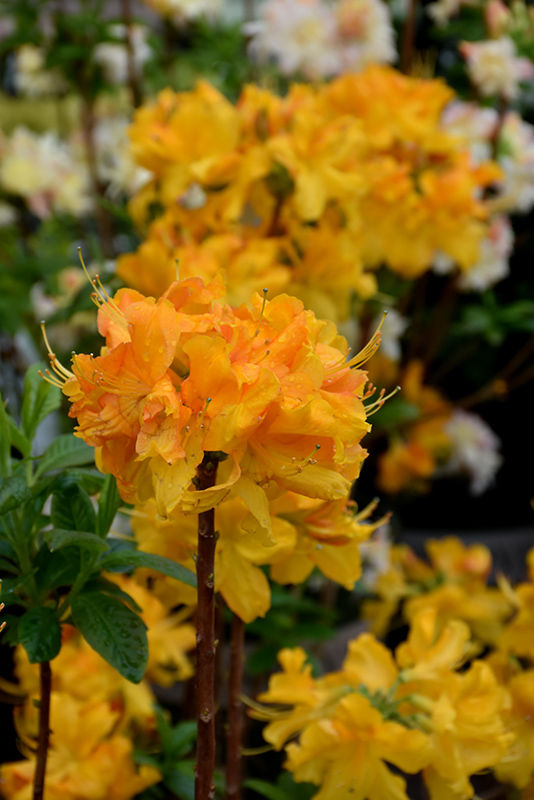Plant Finder
Klondyke Exbury Azalea
Rhododendron 'Klondyke'
Height: 8 feet
Spread: 8 feet
Sunlight:
![]()
![]()
Hardiness Zone: 5
Group/Class: Exbury Hybrids
Description:
A stunning variety with extraordinary coral and yellow blooms with golden blotch that cover the branches in mid spring; showy when massed in a border; absolutely must have well-drained, highly acidic and organic soil, use plenty of peat moss when planting
Ornamental Features
Klondyke Exbury Azalea is covered in stunning clusters of lightly-scented coral-pink trumpet-shaped flowers with yellow overtones and a gold blotch at the ends of the branches in mid spring before the leaves. It has green deciduous foliage. The glossy narrow leaves turn an outstanding red in the fall.
Landscape Attributes
Klondyke Exbury Azalea is an open multi-stemmed deciduous shrub with an upright spreading habit of growth. Its relatively coarse texture can be used to stand it apart from other landscape plants with finer foliage.
This is a relatively low maintenance shrub, and should only be pruned after flowering to avoid removing any of the current season's flowers. It has no significant negative characteristics.
Klondyke Exbury Azalea is recommended for the following landscape applications;
- Accent
- Mass Planting
- General Garden Use
Planting & Growing
Klondyke Exbury Azalea will grow to be about 8 feet tall at maturity, with a spread of 8 feet. It tends to be a little leggy, with a typical clearance of 1 foot from the ground, and is suitable for planting under power lines. It grows at a slow rate, and under ideal conditions can be expected to live for 40 years or more.
This shrub does best in full sun to partial shade. It requires an evenly moist well-drained soil for optimal growth, but will die in standing water. It is very fussy about its soil conditions and must have rich, acidic soils to ensure success, and is subject to chlorosis (yellowing) of the foliage in alkaline soils. It is somewhat tolerant of urban pollution, and will benefit from being planted in a relatively sheltered location. Consider applying a thick mulch around the root zone in winter to protect it in exposed locations or colder microclimates. This particular variety is an interspecific hybrid.
Disclaimer - Rutgers Landscape & Nursery Plant Finder is an online resource representing many of the varieties that we carry over the course of the season, and is intended for informational purposes only. Inventory varies seasonally, so we cannot guarantee that every plant will be in stock at all times - please contact Rutgers directly for current availability.

